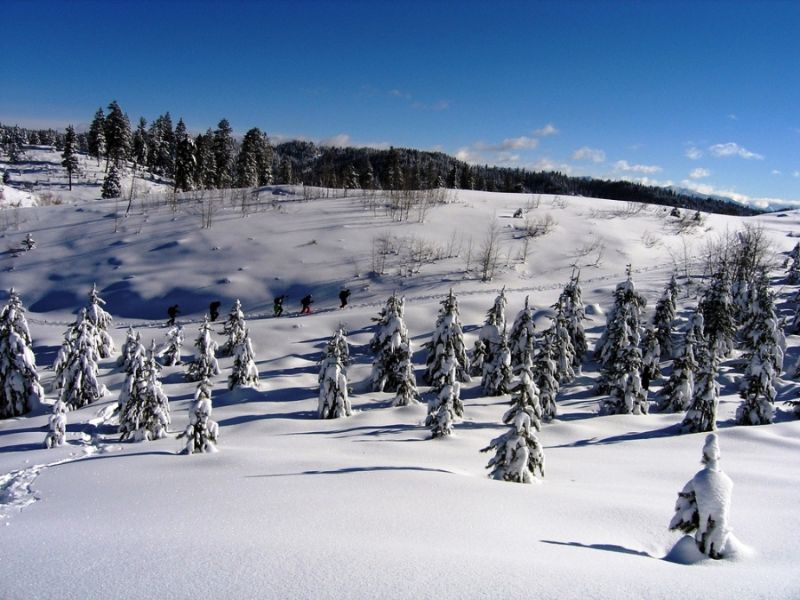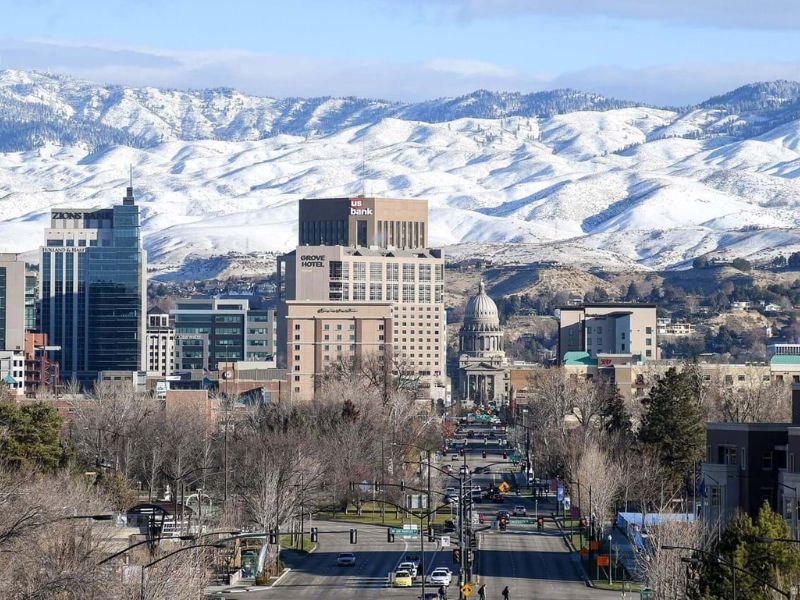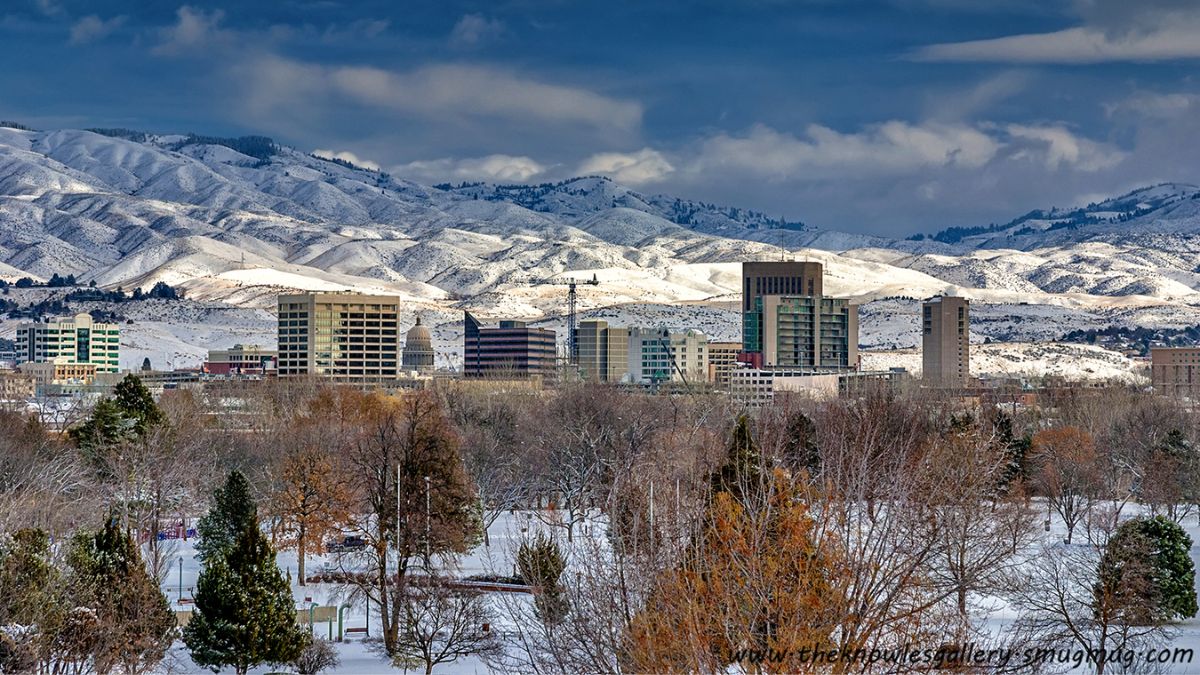Yes, it does snow in Boise, Idaho. As mentioned in the previous article, Boise experiences a continental climate with cold winters, and its location in the Intermountain West exposes it to weather patterns that can bring significant snowfall during the winter months. On average, Boise receives approximately 20 inches of snow annually.
However, the amount and frequency of snowfall can vary from year to year, and some winters may be snowier than others. Despite this variability, residents and visitors can enjoy various winter activities in and around Boise, making the most of the snowy season.
Idaho, also known as the Gem State, is famous for its stunning landscapes, rugged mountains, and picturesque valleys. Among its cities, Boise stands as the capital and largest urban center of the state.
As a city that experiences four distinct seasons, one question that often arises is whether Boise receives snow during the winter months. In this article, we will delve into the winter climate of Boise and examine the factors that contribute to its snowfall patterns.
Location Overview of Boise
Boise, the capital and largest city of Idaho, is nestled in the heart of the Intermountain West region of the United States. Situated along the Boise River and surrounded by picturesque mountains, Boise offers a unique blend of urban amenities and natural beauty, making it a vibrant and attractive destination.
Boise is located in the southwestern part of Idaho, approximately 41 miles east of the Oregon border. The city lies within the Boise Valley, which is part of the larger Treasure Valley, named for the abundance of natural resources and fertile land in the area.
One of Boise’s defining features is its proximity to the great outdoors. The Boise River flows through the city, providing a picturesque backdrop and opportunities for recreation such as fishing, kayaking, and riverside trails.
The Boise Foothills rise gradually to the northeast, offering hiking and biking trails with panoramic views of the city and surrounding landscapes.
Moreover, just a short drive from downtown, residents can access the Boise National Forest and Sawtooth National Recreation Area, where outdoor enthusiasts can indulge in camping, hiking, skiing, and other activities amidst the rugged beauty of the Rocky Mountains.
Boise offers an array of cultural attractions, including museums, art galleries, and performing arts centers. The Boise Art Museum, Idaho State Historical Museum, and the Morrison Center for the Performing Arts are just a few of the cultural gems that enrich the city’s artistic landscape.
Boise, Idaho’s capital, situated at the intersection of urban amenities and natural beauty, is a gem of the Intermountain West. With its prime location, thriving economy, access to outdoor activities, and strong sense of community, Boise offers residents and visitors an exceptional quality of life.
Whether one seeks the excitement of the city or the tranquility of nature, Boise provides a perfect balance of both, making it a truly unique and attractive destination in the heart of the Gem State.
Geography and Climate of Boise
Boise lies in the western United States, where it is influenced by a continental climate. This type of climate is characterized by significant temperature variations between seasona. Its location in the Intermountain West exposes it to weather patterns that can bring substantial amounts of snow during the winter.

Boise experiences a semi-arid climate characterized by hot, dry summers and cold winters. The city enjoys around 206 sunny days per year, making it an excellent destination for those seeking a sunny and mild climate.
Average high temperatures in the summer months range from the mid-80s to low 90s Fahrenheit, while average lows in winter can dip into the mid-20s to low 30s Fahrenheit.
Historical Snowfall Record of Boise
Boise, Idaho, has experienced several notable snow events throughout its history. While snowfall amounts can vary from year to year, certain events stand out for their significance and impact on the city. Here are some of the most notable historical snowfall records in Boise:
- December 28-30, 1983
This three-day snowstorm brought an unprecedented amount of snow to Boise, with a total accumulation of over 30 inches in some areas. The heavy snowfall paralyzed the city, leading to widespread closures and travel disruptions. It remains one of the most substantial snowfalls ever recorded in Boise’s history.
- December 22-24, 2008
A pre-Christmas snowstorm in 2008 blanketed the city with about 11.5 inches of snow, causing traffic accidents and power outages. The snowfall, combined with freezing temperatures, created hazardous conditions for residents and visitors.
- February 9-10, 2019
In 2019, a winter storm brought significant snowfall to Boise, resulting in around 7 inches of snow accumulation. This snow event caused school closures, flight cancellations, and challenges for commuters.
- January 3-5, 2021
The new year began with a winter storm that dumped approximately 8.5 inches of snow on Boise. This snowfall impacted local businesses and transportation, making it difficult for people to navigate the city’s roadways.
It is important to note that these snow events are just a few examples, and Boise has experienced numerous other snowstorms and snowfalls throughout its history. The city’s variable climate can lead to considerable variations in snowfall amounts from year to year, with some winters experiencing heavier snowfall than others.
Despite these occasional significant snow events, Boise typically enjoys a relatively mild winter climate, making it an attractive location for those who prefer a balance of four distinct seasons without experiencing the harsh winter conditions found in many other parts of the country.
Winter Season & Snowfall Pattern of Boise
It does snow in Boise, but the amount and frequency of snowfall can be quite unpredictable. On average, Boise receives approximately 20 inches of snow annually. However, some winters can be snowier than others, with snowfall amounts exceeding the average.
Conversely, there are also years when the city experiences relatively mild winters with less snow accumulation. During the winter months, Boise experiences average low temperatures ranging from the mid-20s to low 30s Fahrenheit.
High temperatures can vary between the upper 30s to mid-40s Fahrenheit. These cold temperatures provide favorable conditions for snowfall, but the amount of snow can vary greatly from year to year.
Locations to Enjoy Snow in Boise
Boise, Idaho, may be known for its sunny and mild climate, but when winter arrives, it transforms into a winter wonderland, offering plenty of opportunities to enjoy the snow.
Whether you are an avid winter sports enthusiast or simply seeking picturesque snowy landscapes, here are some top locations in and around Boise to embrace the snowy season:
- Bogus Basin Mountain Recreation Area
Located just 16 miles north of Boise, Bogus Basin is a popular winter destination for locals and visitors alike. This ski and snowboard resort boasts over 2,600 acres of skiable terrain, with varying difficulty levels suitable for beginners to expert riders.
With an average snowfall of around 250 inches, Bogus Basin offers fantastic skiing, snowboarding, snowshoeing, and tubing opportunities, making it a winter paradise for outdoor enthusiasts.
- Idaho City
Approximately an hour’s drive from Boise, Idaho City takes visitors back in time with its well-preserved historic charm. During winter, this quaint town is blanketed in snow, creating a picture-perfect scene straight out of a postcard.
- Ann Morrison Park
Even within the city, you can find spots to enjoy the snow. Ann Morrison Park, located along the Boise River, offers a beautiful setting for snowshoeing and winter walks. When snow covers the park, it becomes a peaceful and serene escape from the bustling city.
- Boise National Forest
If you are willing to venture a bit further, the Boise National Forest offers an abundance of winter activities. From cross-country skiing and snowshoeing to snowmobiling, this vast forest provides ample opportunities to explore the snowy backcountry and enjoy the tranquility of nature.
- Bown Crossing
Bown Crossing, a charming neighborhood in Boise, becomes even more enchanting when covered in snow. Stroll through its tree-lined streets, visit the local shops, and stop for a warm cup of coffee or hot chocolate at one of the cafes. The snow-laden surroundings add a magical touch to the area.
- Lucky Peak Reservoir
During the winter, Lucky Peak Reservoir and its surroundings offer a serene and scenic setting for snowshoeing and winter hikes. The nearby hills and trails provide breathtaking views of the reservoir and the city below, creating an unforgettable winter experience.
- Hyde Park
Hyde Park, located in Boise’s North End, is a lively and vibrant district. When the snow falls, this area exudes a cozy and festive ambiance. Enjoy a leisurely walk among the snow-draped houses and visit the local shops and restaurants that warmly welcome visitors throughout the winter season.
Factors Influencing Snowfall in Boise
Several factors contribute to the snowfall patterns in Boise:

- Pacific Storms
Boise’s proximity to the Pacific Ocean plays a crucial role in its winter weather. When moist air masses from the Pacific collide with the colder air over the Rocky Mountains, it can lead to significant snow events in the region.
- Temperature Inversions
Boise is susceptible to temperature inversions during the winter. Inversions occur when a layer of warm air traps cooler air closer to the ground. This can lead to extended periods of cold and foggy conditions in the valley, but it may also inhibit snowfall, as the warmer air aloft prevents precipitation from falling as snow.
- Geographical Location
Boise’s location in the Treasure Valley, surrounded by mountains, can create a microclimate that influences snowfall patterns. While the surrounding mountains may receive heavy snow, the valley floor, including Boise, might experience milder conditions.
Conclusion
Boise, Idaho, does experience snow during the winter months, but the amount and frequency can be highly variable from year to year. The city’s continental climate, influenced by Pacific storms and temperature inversions, contributes to the snowfall patterns.
While snow lovers can expect some winter wonder, those who prefer milder conditions will also enjoy plenty of winter activities in this beautiful city amid the snowy landscapes. Whether you’re a fan of winter sports or prefer cozying up indoors, Boise offers something for everyone during the snowy season.
